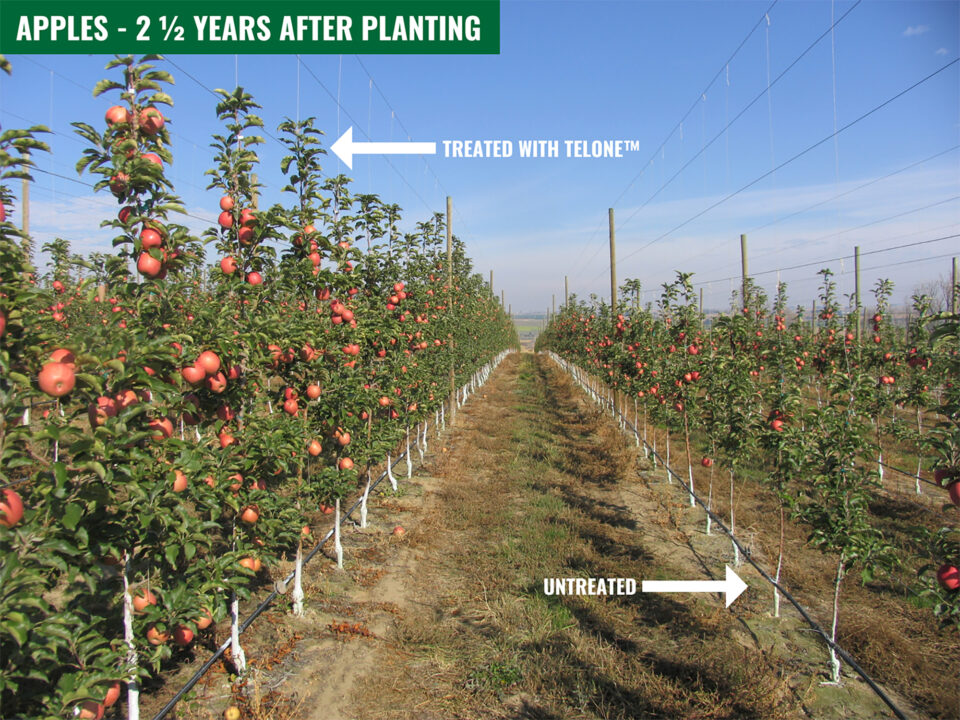Apple Grower Survey Addresses Priorities
As my favorite college teacher told me when I was choosing a career, “If you don’t know where you’re going, you’ll end up somewhere else.” Now years later, my high school senior faces questions about her future on college applications, questions even adults would ponder such as: “Describe the world you come from and how did that world shape who you want to be?” and, “If you could balance on a tightrope, over what landscape would you walk? (No net.)”
Looking ahead five years, what will the apple landscape look like, and will your business be ready? Do you have a net or not? In getting there, what are your biggest challenges and what will put you at the top of your game?
With rapid change happening in the apple industry, the growers, packers, and marketers who lead USApple ask the same questions of their Association. This means doing strategic planning. What should USApple look like to successfully meet the needs of the industry in five years? What steps should USApple take now to get there?
We asked our members these questions in a survey and in personal interviews in December and January. Here is what they said:
• Some think the apple industry is inevitably cyclical, with production and price swings. Others believe today’s increased plantings, new varieties, storage expansion, new packing line technology, and other investments mean tremendous opportunity to increase demand here and abroad. In fact, they say it’s imperative to increase consumption for a profitable future.
• Consolidation will likely continue at a slower pace over the next several years unless the apple industry faces a downturn. Food safety requirements will add relatively greater stress to smaller operators. More new varieties will be introduced. The “new” marketplace will be influenced by changing consumer demographics, lifestyle choices, and food consumption preferences, here and abroad. Strong apple exports will be critical for our industry. (In 2010, overseas sales reached $880 million, nearly 40% of the total value of the $2 billion crop. Aggressive exports also mean fewer apples remain in our domestic market, which strengthens prices for growers nationwide.)
• Healthy apples and apple products are well positioned for the future as medical professionals and workout trainers encourage us to eat more fruits and vegetables for good nutrition and to fight obesity. The new Dietary Guidelines recommend that produce make up “half the plate” of each meal. New discoveries about the nutritional benefits of apples and apple products are gaining widespread media attention and encouraging consumers to enjoy them more.
• Apple industry leaders emphatically told USApple that labor is their number-one issue now and in the near future. This means having reliable labor to harvest when the crop is ready, legal labor to avoid enforcement crackdowns, and skilled labor to pick a high-quality crop.
• Apple leaders told us they believe that ongoing federal legislative and regulatory issues will continue to impact their future. Solving the labor problem, they said, is the single most important thing that USApple can do for the industry.
Speaking Up Is Critical
From where I sit, it’s clear that government caused our labor crisis and government needs to solve it. The solution lies with Congress and the President to improve the current H-2A guest worker program and to provide a legal opportunity for the current migrant workforce to work in our country.
Both conservatives and liberals across the political spectrum need to understand that the threat is so severe for the apple industry (and others in labor-intensive agriculture) that they are willing to overcome their differences and work together to resolve our very real labor problem. The increasingly bitter public debate over immigration, deportation, and undocumented workers makes it critical for our industry to keep the labor problem front and center. USApple is advocating intensely for a solution on Capitol Hill with Members of Congress, as well as with the White House.
To make a difference, talk to your Representative and Senators about what the labor threat means to your business, your family, and your local economy. They need to know the facts and hear from you, whether you agree with their position or not. If solving the labor problem is important for your business, speak up and let your Members of Congress know.
There will be a breakthrough at some point. Hopefully, it will come before many fruits and vegetables aren’t harvested and our nation increasingly relies on imported produce. Our fruit will be picked by foreign workers here or by foreign workers overseas and imported. That is the choice.
USApple’s Board of Directors will soon consider a new strategic plan that reflects the industry’s highest priorities for the next five years. One apple packer-shipper told me, “If your head is in the sand, the sand will bury you.” Instead, we will defend our industry’s ability to produce, pack, process, and market without undue regulation. USApple will relentlessly work to meet the greatest needs of our industry head-on over the next five years.









